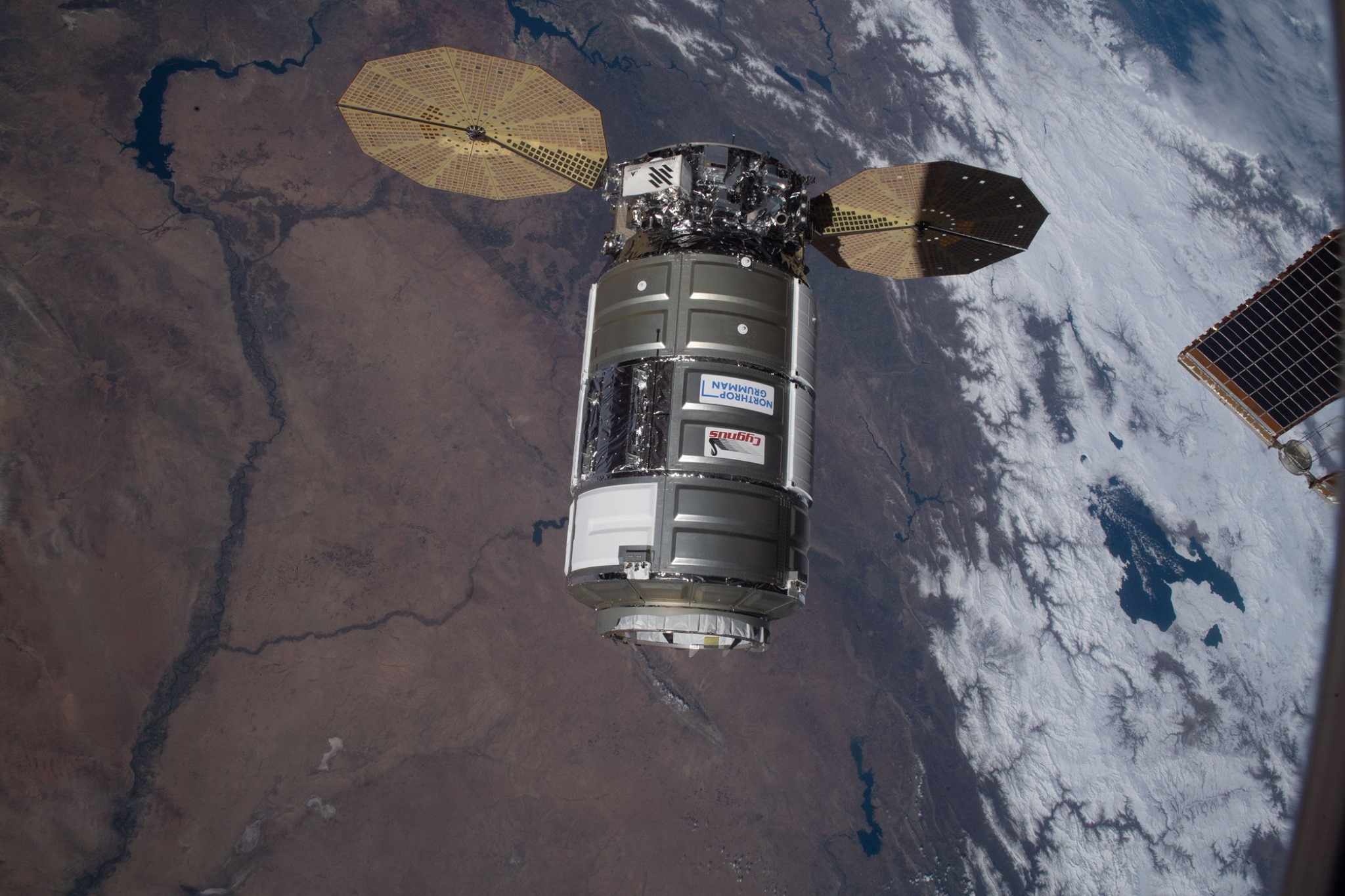
For SpaceUpClose.com & RocketSTEM
CAPE CANAVERAL, FL – Two days after the 15th Northrop Grumman Cygnus commercial resupply spacecraft flawlessly launched at 12:36 p.m. EST Saturday, Feb. 20 from NASA’s Wallops Flight Facility on the eastern shore of Virginia the vessel arrived at the International Space Station overnight Monday morning, Feb. 22 and was successfully captured by a team of NASA and JAXA astronauts using the Canadian-built robotic arm for berthing and delivery of some 4 tons of science investigations and cargo for the 7 person multinational crew living and working onboard.
After the two-day orbital chase the Cygnus NG-15 cargo craft arrived in the vicinity of the ISS as the astronaut crew monitored the rendezvous from the domed Cupola robotics work station.
Finally at 4:38 a.m. EST (0938 GMT), Expedition 64 Flight Engineer Soichi Noguchi of the Japanese Aerospace Exploration Agency (JAXA) extended the station’s 57 foot long robotic Canadarm2 to successfully grapple the Cygnus freighter at a distance of about 40 feet (10 m) below the orbiting outpost as NASA Flight Engineer Michael Hopkins monitored Cygnus systems during its approach and it was orbiting 262 miles (400 km) above Oman.
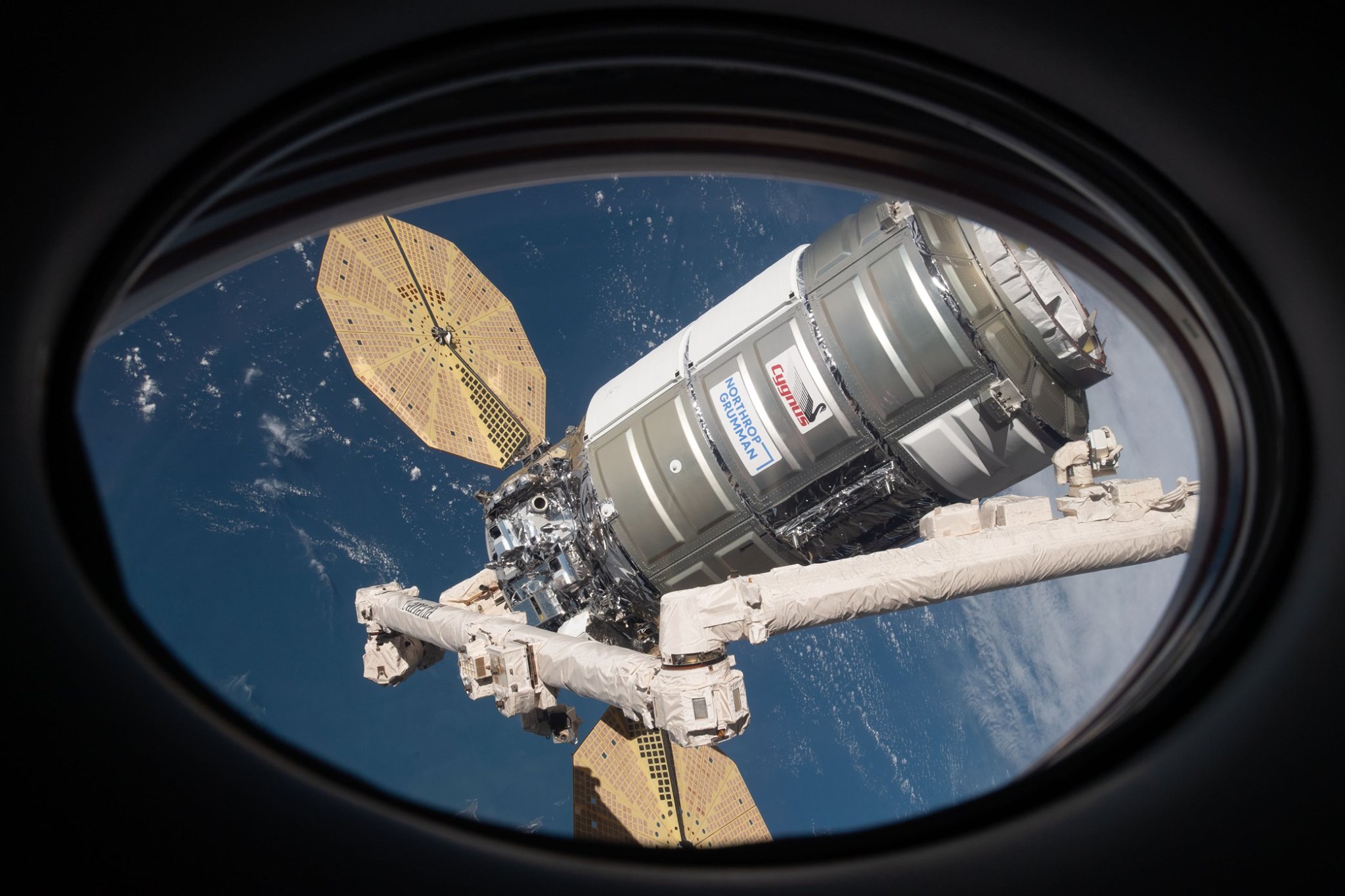
NASA engineers in Mission Control at NASA’s Johnson Space Center in Houston then took over to command the arm movement and finish berthing Cygnus by rotating it for installation on the stations Earth-facing port on the Unity module at 7:16 a.m. EST Monday morning and subsequently bolted into place.
https://twitter.com/Space_Station/status/1364282099797172227
Cygnus was named the S.S. Katherine Johnson in honor of Katherine Johnson a black woman working for NASA on John Glenn’s flight and much more.
Cygnus launch took place on the 59th anniversary of John Glenn’s historic Mercury flight as the first U.S. astronaut to orbit Earth. The inspiring story of Katherine Johnson was highlighted in the hit movie ‘Hidden Figures.’
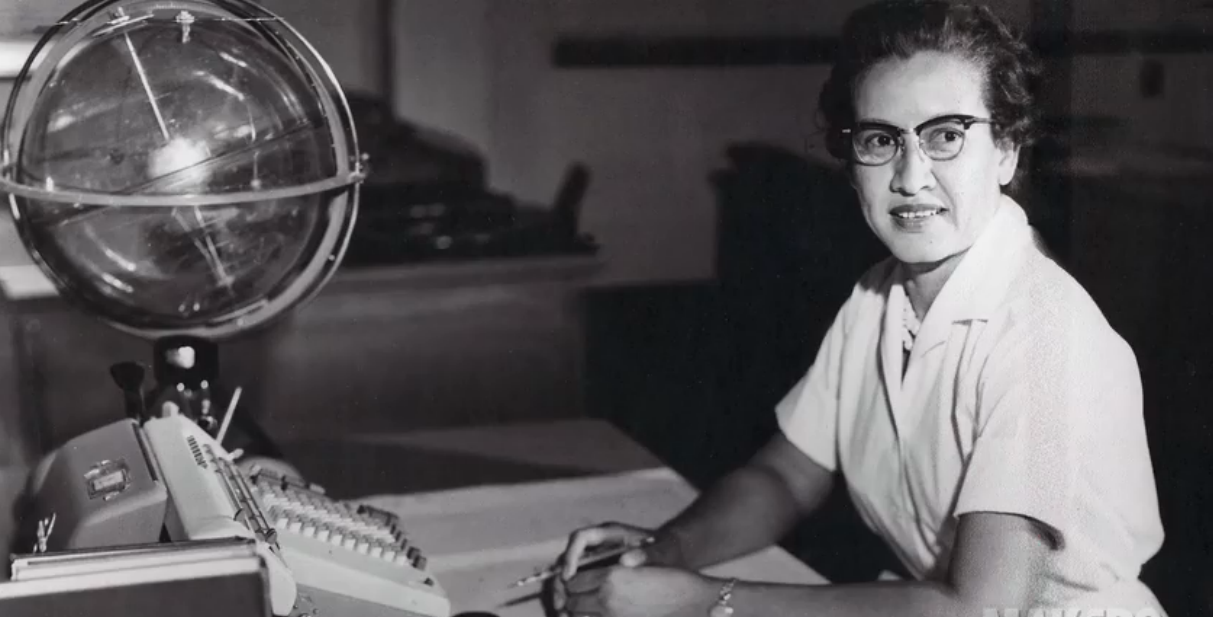
“Congratulations to Northrop Grumman, to ESA, to JAXA, and to NASA for the successful arrival and capture of the S.S. Katherine Johnson,” said NASA astronaut Mike Hopkins from the International Space Station.
“You guys have kept the lifeline to station alive despite some very difficult challenges on the ground, and just like Katherine Johnson helped enable human spaceflight during her time at NASA, her namesake is continuing that today. Well done everyone.”
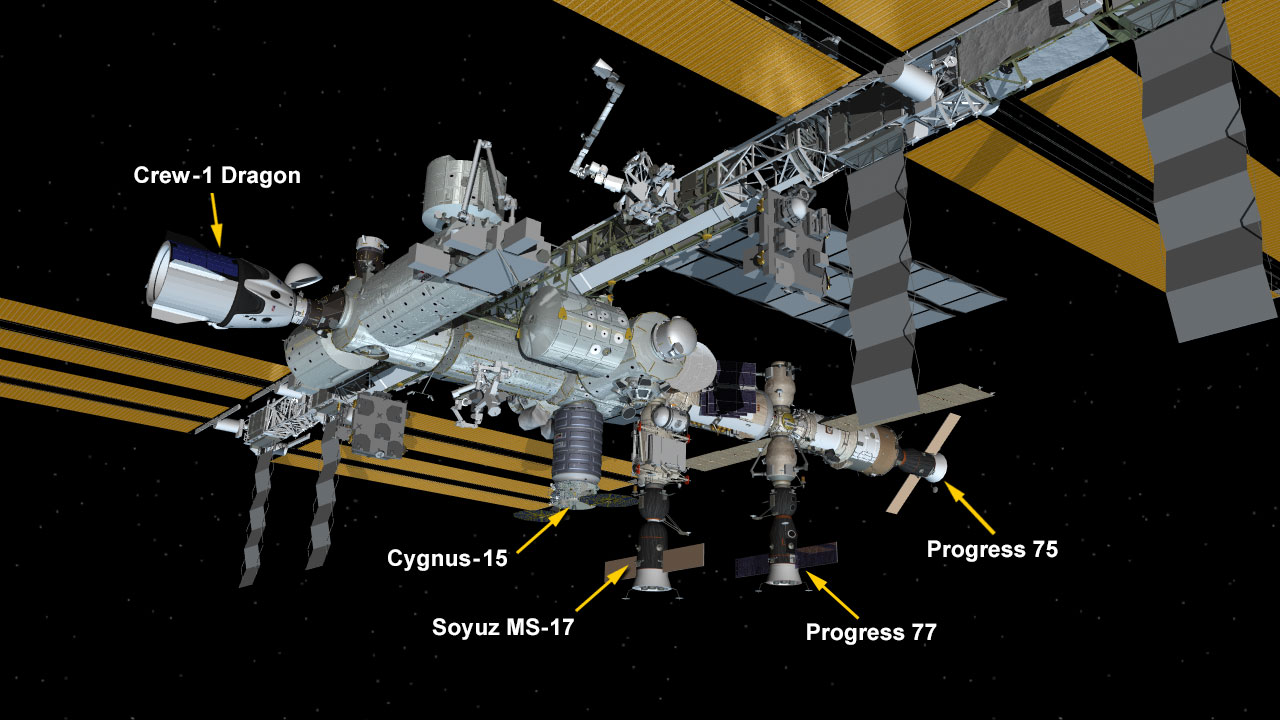
Cygnus delivered some 8000 pounds of cargo is composed of about 1/3 science, 1/3 ISS hardware and 1/3 crew supplies and consumables.
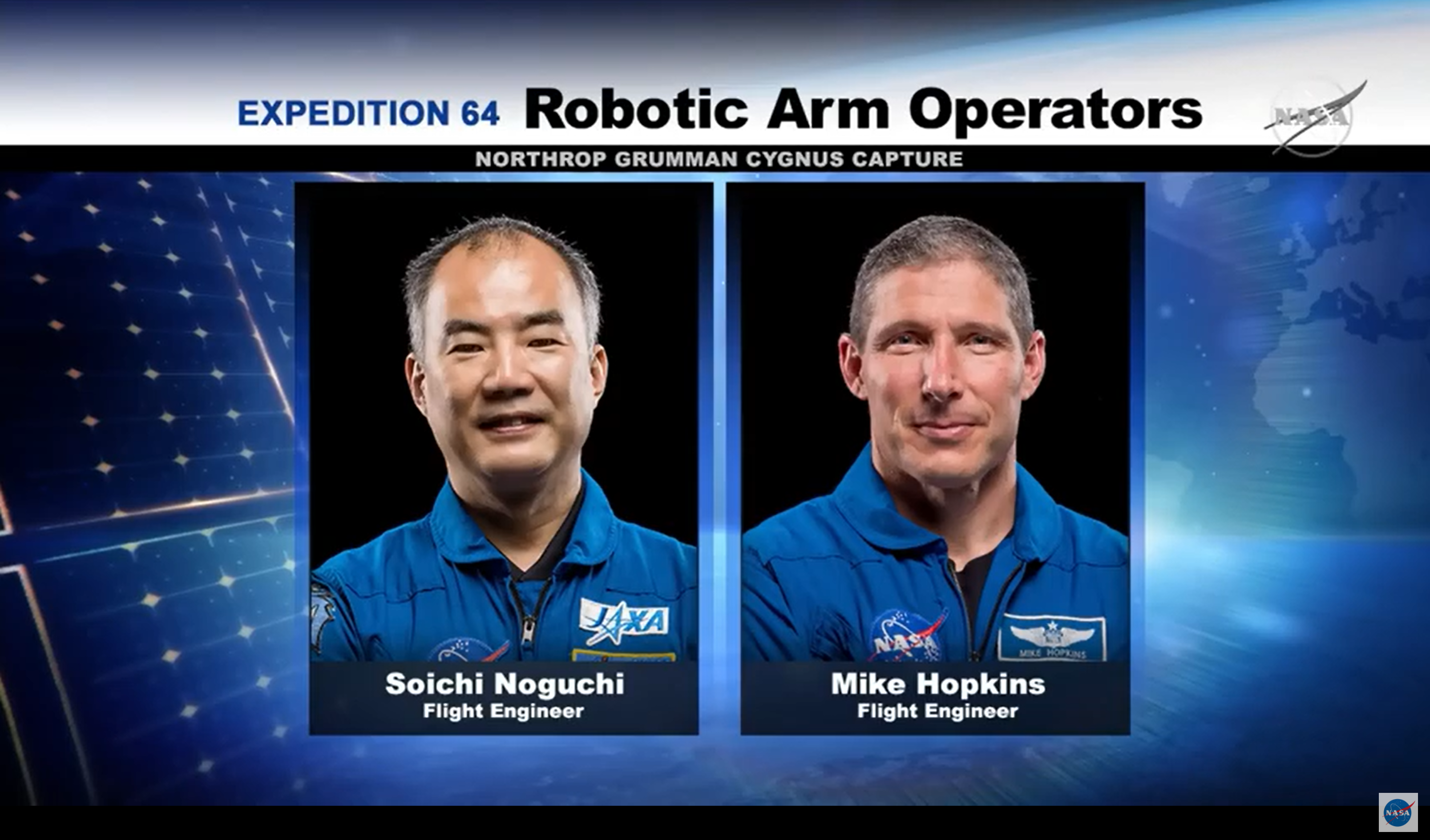
“NASA Flight Engineers Michael Hopkins and Shannon Walker have been offloading the new science hardware, crew supplies and station hardware stowed inside Cygnus. Noguchi transferred Cygnus’ science freezers containing biological samples into the station and installed them into specialized science racks. Rubins and Glover also assisted with the cargo transfers,” NASA reported today.
Cygnus now begins an approximately 3 month stay until May, when the spacecraft will depart the station.
Following departure, the Cygnus will dispose of several tons of trash during a fiery reentry into Earth’s atmosphere as usual.
The crew is also in the midst of preparing for a duo of spacewalks by NASA astronauts Kate Rubins and Victor Glover on Feb 28 and March 5.
Spacewalks are the focus now as the Exp 64 crew begins unloading four tons of cargo from the new @NorthropGrumman #Cygnus U.S. space freighter. More… https://t.co/nTzCvgAoVk pic.twitter.com/b5snu4Ebjf
— International Space Station (@Space_Station) February 24, 2021
During the 1st spacewalk on Sunday, Feb. 28, Rubins and Glover will ready the station for upcoming upgrades with new solar arrays set for launch this summer.
The 2nd spacewalk will see Rubins and Noguchi work on upgrading coolant gear and communication systems.
Both will be carried live on NASA TV
EVA 1 is planned to last six-and-a-half hours. NASA TV will begin its live coverage of the spacewalk activities at 4:30 a.m.
Station experts will be on @NASA TV on Wednesday at 2pm ET talking about two spacewalks scheduled for Feb. 28 and March 5. We'll be answering #AskNASA questions too. https://t.co/6h9jfQVDG0
— International Space Station (@Space_Station) February 23, 2021
Here is the cargo manifest on the NG-15 mission:
- Vehicle Hardware: 3,115 pounds (1,413 kilograms)
- Science Investigations: 2,484 pounds (1,127 kilograms)
- Crew Supplies: 2,054 pounds (932 kilograms)
- Unpressurized Cargo: 176 pounds (67 kilograms)
- Spacewalk Equipment: 52 pounds (24 kilograms)
- Russian Hardware: 52 pounds (24 kilograms)
- Computer Resources: 2 pounds (1 kilogram)
Here are Highlights of science investigations aboard this Cygnus from NASA:
A new vision
Millions of people on Earth suffer from retinal degenerative diseases. These conditions have no cure, although treatments can slow their progression. Artificial retinas or retinal implants may provide a way to restore meaningful vision for those affected. In 2018, startup LambdaVision sent their first experiment to the space station to determine whether the process used to create artificial retinal implants by forming a thin film one layer at a time may work better in microgravity.
A second experiment by LambdaVision launching on NG CRS-15, Protein-Based Artificial Retina Manufacturing, builds on the first project, evaluating a manufacturing system that uses a light-activated protein to replace the function of damaged cells in the eye. This information may help LambdaVision uncover whether microgravity optimizes production of these retinas, and could assist people back on Earth.
Bringing advanced computing aboard the space station
Due to a need to prioritize reliability over performance, computing capabilities in space are reduced compared to capabilities on the ground, creating challenges when transmitting data to and from space. Although relying on ground-based computers is possible for exploration on the Moon or in low-Earth orbit, this solution will not work for exploration farther into the solar system. Launched in 2017, the SpaceborneComputer study ran a high-performance commercial off-the-shelf computer system in space with the goal of having the system operate seamlessly for one year. It successfully performed more than 1 trillion calculations (or one teraflop) per second for 207 days without requiring reset.
Spaceborne Computer-2 builds on the successes of this first study, exploring how off-the-shelf computer systems can advance exploration by processing data significantly faster in space with edge computing and artificial intelligence (AI) capabilities. This experiment plans to demonstrate that Earth-based data processing of current station science data can instead be performed on station. Eliminating the need for researchers to send all raw data back to Earth for analysis could speed scientists’ time-to-insight from months to minutes.
Space worms to the rescue
Tiny worms could help us determine the cause of muscle weakening that astronauts can experience in microgravity. Astronauts work out more than two hours a day aboard the space station to prevent bone and muscle loss caused by living in a microgravity environment during long-duration missions. Thanks to a new device for measuring the muscle strength of tiny C. elegans worms, researchers with the Micro-16 study can test whether decreased expression of muscle proteins is associated with this decreased strength. The device consists of a small microscope slide filled with little rubber pillars. The strength of the worms is measured by how much force the worms apply to the pillars as they move around the slide.
Preparing for the Moon
The International Space Station serves as a testing ground for technologies we plan to use on future Artemis missions to the Moon. The NASA A-HoSS investigation puts to the test tools planned for use on the crewed Artemis II mission that will orbit the Moon. Built as the primary radiation detection system for the Orion spacecraft, the Hybrid Electronic Radiation Assessor (HERA) was modified for operation on the space station.
Verifying that HERA can operate without error for 30 days validates the system for crewed Artemis mission operations. A related investigation, ISS HERA, flew in 2019 aboard the space station. ISS HERA provided data and operational feedback in preparation for the Orion spacecraft’s uncrewed Artemis I mission that will launch in 2021.
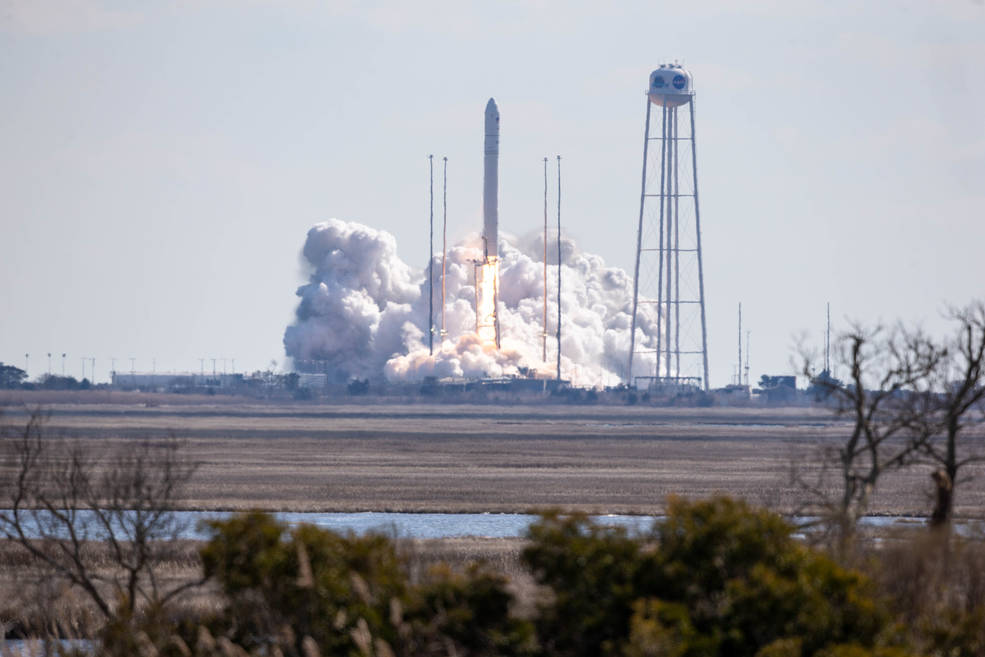
Northrop Grumman’s 15th cargo flight to the space station is the fourth under its Commercial Resupply Services 2 (CRS-2) contract with NASA for a total of at least 19 resupply missions overall.
The prior Cygnus NG-14 departed the ISS on Jan. 6, 2021.
Watch Ken’s continuing reports about Antares and Cygnus, Mars 2020 Perseverance and Curiosity rovers, Artemis and NASA missions, SpaceX, Starlink, Commercial Crew and Starliner and Crew Dragon and onsite for live reporting of upcoming and recent SpaceX and ULA launches including Crew 1 & 2, Demo-2, ISS, X-37B, Solar Orbiter, NRO spysats and national security missions and more at the Kennedy Space Center and Cape Canaveral Space Force Station.
Stay tuned here for Ken’s continuing Earth and Planetary science and human spaceflight news: www.kenkremer.com –www.spaceupclose.com – twitter @ken_kremer – email: ken at kenkremer.com
Dr. Kremer is a research scientist and journalist based in the KSC area, active in outreach and interviewed regularly on TV and radio about space topics.
………….
Ken’s photos are for sale and he is available for lectures and outreach events
Ken has created hundreds of widely published Mars rover mosaics and lectures also about NASA’s Mars rovers
Please consider supporting Ken’s work by donating at Patreon:
https://www.patreon.com/kenkremer
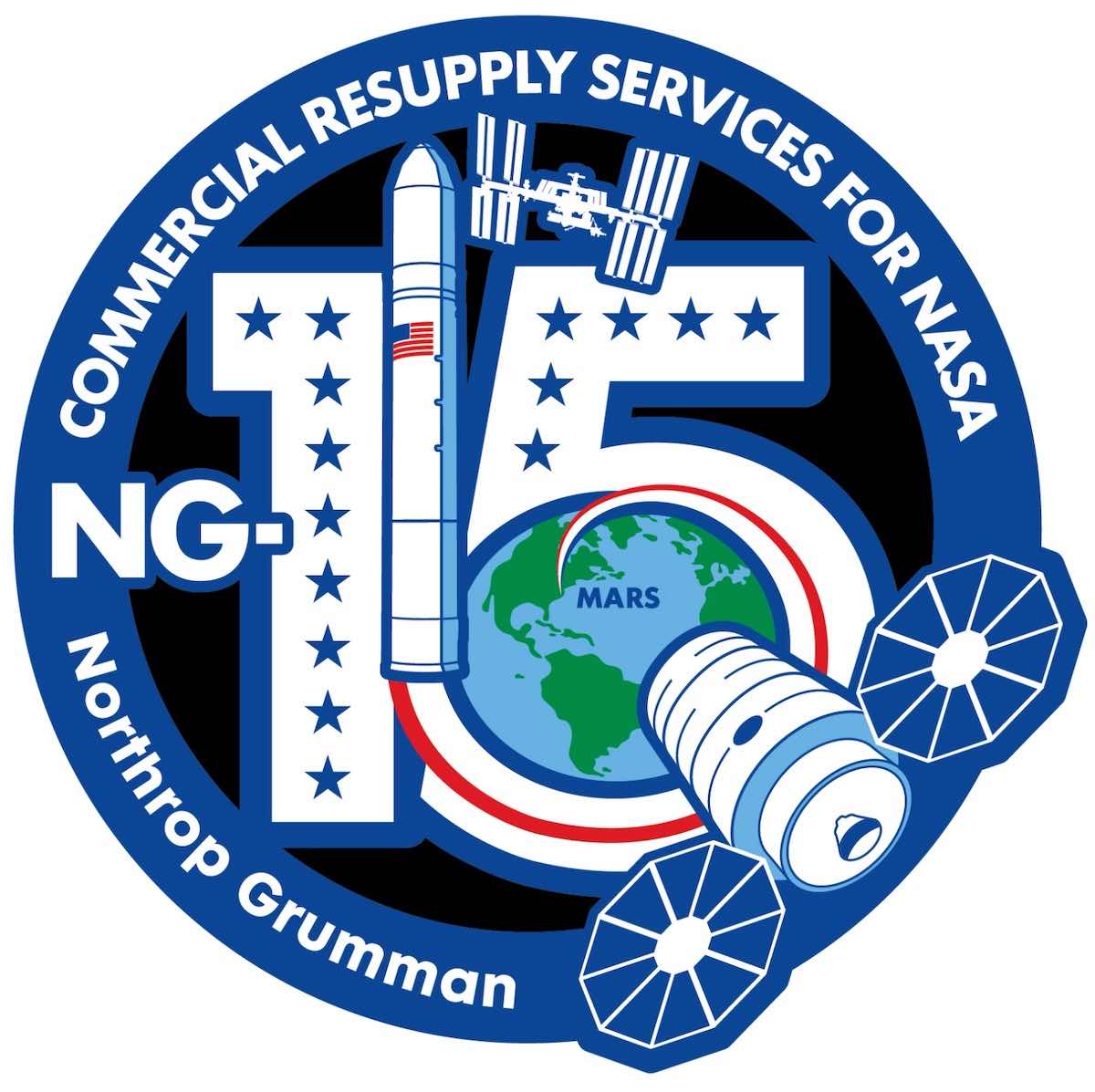
x



